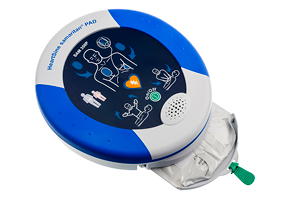
Pulseless Ventricular Tachycardia – A Life Threatening Cardiac Rhythm
There are multiple life threatening cardiac rhythms which can be both dangerous and life threatening. Consequently, it’s important to be informed and equipped with the correct potentially life saving equipment.
What is Pulseless Ventricular Tachycardia?
Pulseless ventricular tachycardia is a life threatening condition that requires rapid diagnosis and treatment. The ventricular filling drops dramatically as a result of fast ventricular contractions, resulting in a significant reduction in cardiac output. Consequently, there is no pulse detected. Moreover, the efficiency of ventricular contractions is further reduced by abnormal ventricular conduction and asynchrony, which aggravates the haemodynamics and leads to an individual suddenly collapsing.
Pulseless VT has various scoring systems in order to differentiate between ventricular tachycardia and supraventricular tachycardia. According to an article in The National Centre for Biotechnology Information, 90 percent of wide complex tachycardia will be ventricular tachycardia.
What Can Cause Pulseless Ventricular Tachycardia?
The most common cause of pulseless VT is coronary heart disease, however, there are numerous additional causes of pulseless ventricular tachycardia, including:
-
Myocardial Infarction (MI)
- Cardiomyopathy.
- Hypertrophic Obstructive Cardiomyopathy (HOCM)
- Aortic Stenosis.
- Congestive Heart Failure.
Signs of Pulseless VT
Whilst not everyone who suffers a pulseless ventricular tachycardia will show physical warning signs before the cardiac arrest occurs – some people might suffer from chest pain, palpitations, light-headedness and shortness of breath prior to the event. When someone is suffering from pulseless ventricular tachycardia, they are unresponsive and unconscious without a detectable pulse.
Do you Shock Pulseless Ventricular Tachycardia?
Pulseless Ventricular Tachycardia can be treated through a shock using an AED machine, as it’s part the cardiac arrest algorithm. If you are treating someone who is suffering from a pulseless VT, you should act swiftly and use the left branch of the cardiac arrest algorithm. Various studies re-enforce the importance of swift action as they show a defibrillation response within 3-5 minutes of a person collapsing can increase their survival rate by 50-70 percent.
As a result, it’s imperative to have an AED machine on hand in a multitude of settings in case a person suffers from a life threatening cardiac rhythm such as this.
 Rent an AED with Defib Machines UK Today!
Rent an AED with Defib Machines UK Today!
Whatever setting you require a defibrillator machine for, rest assured that our team will ensure you receive the right package for you. Get in touch with our friendly customer service team today for more information or to purchase your AED today.
You can contact us online or alternatively, call us on 0800 0852 733.


